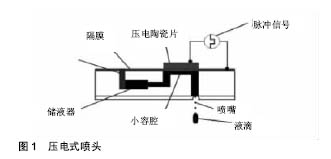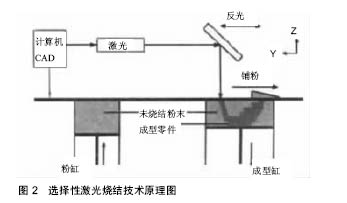| [1]刘许,宋阳. 用于3D打印的生物相容性高分子材料[J]. 合成树脂及塑料,2015,32(4): 96-99.[2]赵冰净,胡敏.金属3D打印技术在口腔医学应用前景[J]. 口腔颌面外科杂志,2015,25(4): 311-314.[3]陈庆,曾军堂,陈韦坤. 3D打印塑料材料技术现状和发展趋势[J]. 新材料产业,2015(6): 27-32.[4]孙聚杰. 3D打印材料及研究热点[J]. 丝网印刷,2013(12): 34-39.[5]贺超良,汤朝晖,田华雨,等. 3D打印技术制备生物医用高分子材料的研究进展[J]. 高分子学报,2013,52(6): 722-732.[6]孙云. 三维喷印成形质量优化研究[J]. 无线互联科技, 2016,(4): 129-131.[7]王志华. 3D喷墨打印带来陶瓷行业新革命[J].中国印刷,2015(8): 79-83.[8]谢彪,王小腾,邱俊峰,等. 光固化3D打印高分子材料[J]. 山东化工,2014,43(11): 70-72.[9]Plymill A,Minneci R,Greeley DA, et al. Graphene and Carbon Nanotube PLA Composite Feedstock Development for Fused Deposition Modeling. University of Tennessee Honors Thesis Projects, 2016.[10]马旭东. 选择性激光烧结在3D打印中的应用[J]. 工程技术研究, 2016(7): 71.[11]王小萍,程炳坤,贾德民. 选择性激光烧结用聚合物粉末材料的研究进展[J]. 合成材料老化与应用, 2016,45(3): 108-113.[12]3D打印肾肿瘤[J]. 中国医学计算机成像杂志, 2014,20(5): 411.[13]Frölich AM, Spallek J, Brehmer L, et al. 3D Printing of Intracranial Aneurysms Using Fused Deposition Modeling Offers Highly Accurate Replications. AJNR Am J Neuroradiol. 2016;37(1):120-124.[14]Wanibuchi M, Noshiro S, Sugino T, et al. Training for Skull Base Surgery with a Colored Temporal Bone Model Created by Three-Dimensional Printing Technology. World Neurosurg. 2016;91:66-72.[15]徐步光,李丹荣,宁锐剑. 3D打印技术在口腔种植领域的应用及对牙科工业发展的革命性影响[J].中国医疗器械信息, 2015(8): 13-18.[16]Lee DH, Mai HN, Yang JC, et al. The effect of 4,4'-bis(N,N-diethylamino) benzophenone on the degree of conversion in liquid photopolymer for dental 3D printing. J Adv Prosthodont. 2015;7(5):386-391.[17]Hoang LN, Thompson GA, Cho SH, et al. Die spacer thickness reproduction for central incisor crown fabrication with combined computer-aided design and 3D printing technology: an in vitro study.J Prosthet Dent. 2015;113(5): 398-404.[18]牛思远,汤恁妤. 3D打印已实现假肢“私人定制”[N]. 南方日报, 2015-06-01(3).[19]3D技术使假肢定制更上一层楼[J]. 工业设计, 2012(8):54.[20]法国Arkema公司开发出可用于假肢及牙垫的3D打印材料[J]. 石油化工, 2015(4): 505.[21]刘亚雄,贺健康,秦勉,等. 定制型钛合金植入物的光固化3D打印及精密铸造[J]. 稀有金属材料与工程, 2014(S1): 339-342.[22]陈大智. 基于3D打印模具设计制备钼钛合金及钴铬钼合金医学植入材料的工艺和材料学研究[D]. 长沙:中南大学,2014.[23]3D打印气管支架植入成功[J]. 中国器械医疗杂志, 2014(4): 300.[24]悉尼大学开发出3D打印骨骼植入物技术[J]. 化工新型材料, 2015(3): 241.[25]Goyanes A, Buanz AB, Basit AW, et al. Fused-filament 3D printing (3DP) for fabrication of tablets. Int J Pharm. 2014; 476(1-2):88-92.[26]Dragone V, Sans V, Rosnes MH, et al. 3D-printed devices for continuous-flow organic chemistry. Beilstein J Org Chem. 2013;9:951-959.[27]伍卫刚. 三维打印技术制备多药控释型载药人工骨及其治疗慢性骨髓炎的实验研究[D]. 武汉:华中科技大学, 2010.[28]Biglino G, Verschueren P, Zegels R, et al. Rapid prototyping compliant arterial phantoms for in-vitro studies and device testing. J Cardiovasc Magn Reson. 2013;15:2.[29]Zhao X, Liu L, Wang J, et al. In vitro vascularization of a combined system based on a 3D printing technique. J Tissue Eng Regen Med. 2016;10(10):833-842.[30]Lee SJ, Heo DN, Park JS, et al. Characterization and preparation of bio-tubular scaffolds for fabricating artificial vascular grafts by combining electrospinning and a 3D printing system. Phys Chem Chem Phys. 2015;17(5): 2996-2999.[31]Huang TQ, Qu X, Liu J, et al. 3D printing of biomimetic microstructures for cancer cell migration. Biomed Microdevices. 2014;16(1):127-132.[32]Lee VK, Kim DY, Ngo H, et al. Creating perfused functional vascular channels using 3D bio-printing technology. Biomaterials. 2014;35(28):8092-8102.[33]易超然,罗婕姝,王文军,等. 3D打印技术在骨组织修复个体化治疗中的应用进展[J]. 中南医学科学杂志, 2015,43(3): 330-333.[34]Barnes JE.Manufacturing a human heel in titanium via 3D printing. Med J Aust. 2015;202(3):118.[35]李小康,伍苏华,李轶,等.3D打印多孔钛合金与聚醚醚酮椎间融合器对羊颈椎融合效果的对比研究[J]. 中华创伤骨科杂志, 2015, 17(1):34-39.[36]He HY, Zhang JY, Mi X, et al. Rapid prototyping for tissue-engineered bone scaffold by 3D printing and biocompatibility study. Int J Clin Exp Med. 2015;8(7): 11777-11785.[37]3D打印人造血管获重大突破[J]. 中国光学,2015(5): 889-890.[38]牛震海. 电纺PVA/壳聚糖复合纳米纤维支架在组织工程皮肤中的实验研究[D]. 吉林:吉林大学, 2011.[39]熊思. 丝素蛋白的降解性能及其三维打印生物活性支架在皮肤修复中的应用研究[D]. 杭州:浙江大学, 2015.[40]Lee V, Singh G, Trasatti JP, et al. Design and fabrication of human skin by three-dimensional bioprinting. Tissue Eng Part C Methods. 2014;20(6):473-484.[41]何创龙,王远亮,杨立华,等. 人工器官的快速成形制造[J]. 山东生物医学工程, 2003, 22(2): 46-50.[42]Reiffel AJ, Kafka C, Hernandez KA, et al. High-fidelity tissue engineering of patient-specific auricles for reconstruction of pediatric microtia and other auricular deformities. PLoS One. 2013;8(2):e56506.[43]用3D打印的糖支架制造人工肝脏[J]. 工业设计,2013(11): 43-44.[44]吕洛衿. 打印一个骨盆,打印一个肾脏——3D打印引领医学革命[J]. 作文, 2014(4): 62-63.[45]Villar G, Graham AD, Bayley H. A tissue-like printed material. Science. 2013;340(6128):48-52.[46]宋杨,王晓飞,王宇光. 人脂肪间充质干细胞与生物材料共混物三维打印体的体内成骨[J]. 北京大学学报:医学版, 2016, 48(1): 45-50.[47]Cui X, Breitenkamp K, Finn MG, et al. Direct human cartilage repair using three-dimensional bioprinting technology. Tissue Eng Part A. 2012;18(11-12):1304-1312.[48]石然,徐铭恩,周青青,等. 基于细胞3D打印技术的体外肿瘤模型构建研究[J]. 中国生物医学工程学报, 2015, 34(5): 618-622. |
.jpg)


.jpg)